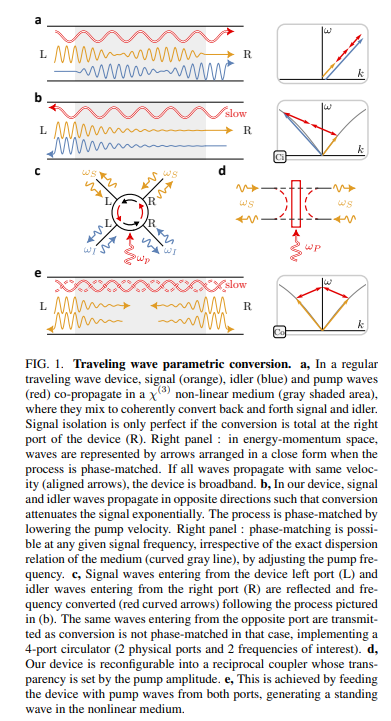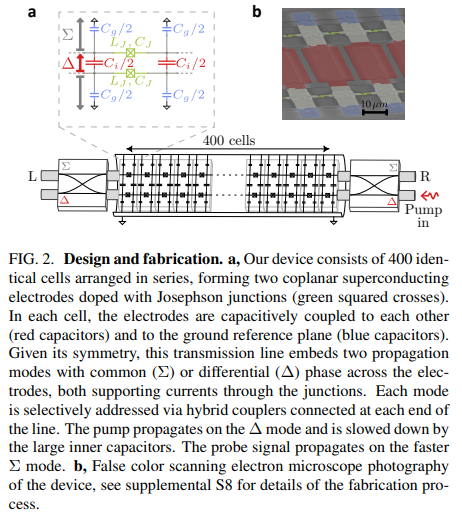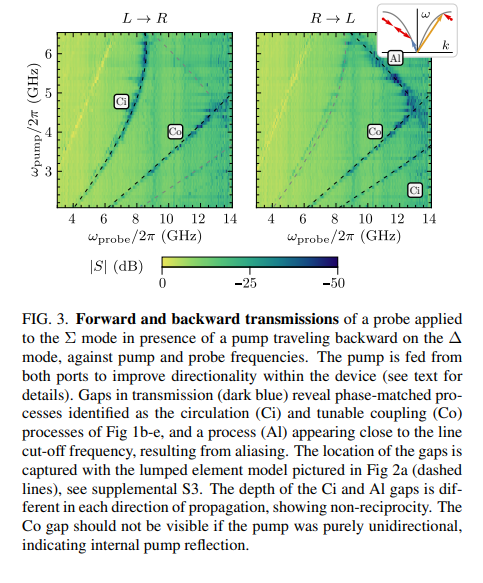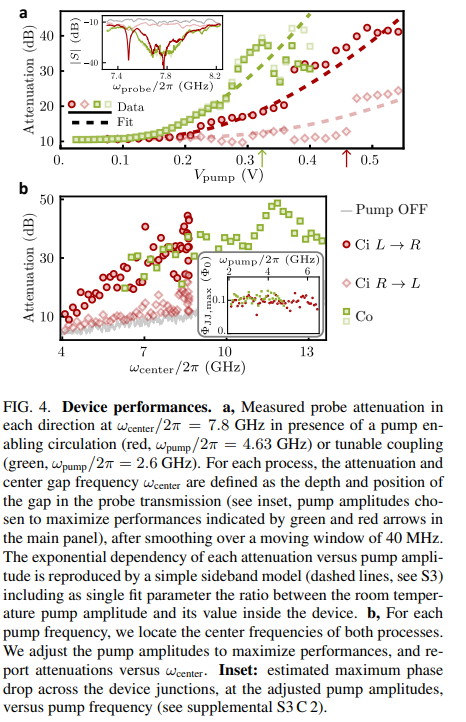Mixing of counterpropagating signals in a traveling-wave Josephson device
2024-06-28 17:56
1122 浏览
Light waves do not interact in vacuum, but may mix through various parametric processes when traveling in a
nonlinear medium. In particular, a high-amplitude wave can be leveraged to frequency convert a low-amplitude
signal, as long as the overall energy and momentum of interacting photons are conserved. These conditions
are typically met when all waves propagate in the medium with identical phase velocity along a particular axis.
In this work, we investigate an alternative scheme by which an input microwave signal propagating along a 1-
dimensional Josephson metamaterial is converted to an output wave propagating in the opposite direction. The
interaction is mediated by a pump wave propagating at low phase velocity. In this novel regime, the input signal
is exponentially attenuated as it travels down the device. We exploit this process to implement a robust on-chip
microwave isolator that can be reconfigured into a reciprocal and tunable coupler. The device mode of operation
is selected in situ, along with its working frequency over a wide microwave range. In the 5.5-8.5 GHz range,
we measure an isolation over 15 dB on a typical bandwidth of 100 MHz, on par with the best existing on-chip
isolators. Substantial margin for improvement exists through design optimization and by reducing fabrication
disorder, opening new avenues for microwave routing and processing in superconducting circuits.








Article:https://arxiv.org/abs/2407.00769
